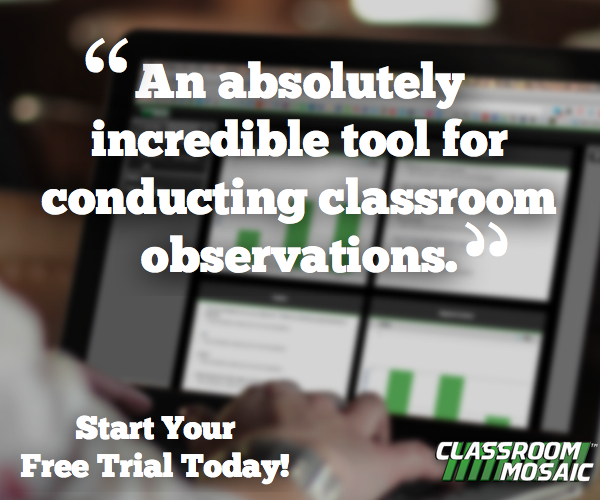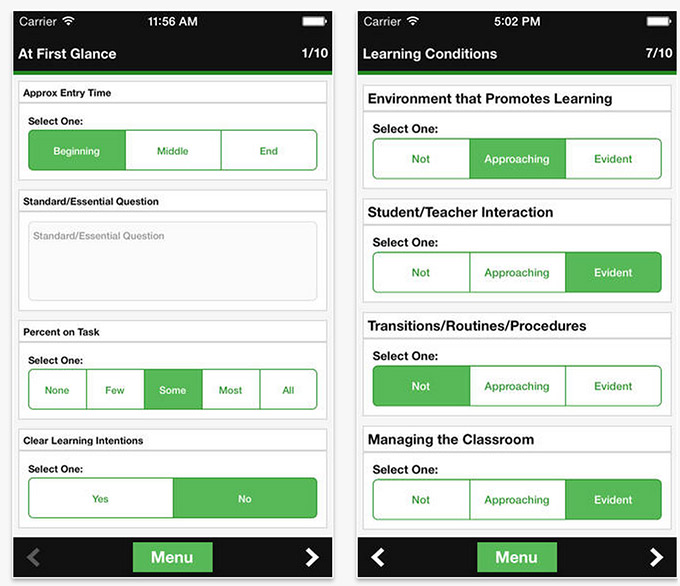Teacher Observation Classroom Mosaic
 No one will dispute the fact that technology in education is exploding. This weekend will start the International Society For Technology in Education (ISTE) conference, the largest gathering of education technology in the world. Tens of thousands of educators, administrators and other ed tech professionals will gather for the three day event in Atlanta, which originally started in 1979.
No one will dispute the fact that technology in education is exploding. This weekend will start the International Society For Technology in Education (ISTE) conference, the largest gathering of education technology in the world. Tens of thousands of educators, administrators and other ed tech professionals will gather for the three day event in Atlanta, which originally started in 1979.
We’ve reported hundreds of EdTech stories here at Techfaster.com and we’ve seen the world of technology in education erupt with learning management systems (LMS), video delivery platforms, tablets, robotics, teachers aids, 3D printing, grading and reporting and much much more.
It seems that if there’s something in education that can be fixed or improved, that’s happening right now. Startups and legacy companies in the education space have made edtech one of the fastest growing verticals in technology.
The same is true for Classroom Mosaic. Ultimately what Classroom Mosaic has done will benefit teachers everywhere, but with them it starts with the teacher.
Almost since the beginning of organized public education, administrators have been doing teacher evaluations. The principal or administrator sits at a desk, awkwardly watching the students as much as the teacher.
They often bring a clipboard or a legal pad with them and some kind of writing utensil. The administrator writes notes, checks off categories while evaluating and observing the teacher for technique, control of the class and a variety of other things.
After the observation the administrator may decide to have a meeting with the teacher but either after the meeting or right after the observation the administrator files that paper, and probably never looks at it again.
There are a lot of data points that an administrator could get from a teacher observation but no one really looked at the data before. Are there trends? Does a teacher excel at teaching math, but perhaps social studies isn’t their strong suit? Does a teacher have difficulty reaching students in the back of the room? Does the teacher explain lessons correctly.
These are questions that couldn’t really be looked at before technology. Classroom Mosaic co-founder Ben Gustafson tells us that most school systems that have looked at taking the classroom observation process to a computer based format or online have either used spread sheets or Google Docs. The only real problem those two methods solve is the actual input method. Extrapolating data is still a daunting task, one that most schools just don’t have the time or resources to do.
At the district level some school systems may call for these reports to be delivered to the home office but once they arrive there they are again, just filed.
With common core standards being implemented across the country taking a look at the teachers can only help by improving the teacher and then in turn the student.
Teachers love to be taught they’re constantly learning and providing a real way for teachers to learn from there own teaching methods could be crucial all around.
 Most startups begin with an idea guy or gal and a developer. Most ed tech startups start with a teacher somewhere in the mix. Gustafson and his co-founder Tyler Smith actually started Classroom Mosaic as students themselves, in high school.
Most startups begin with an idea guy or gal and a developer. Most ed tech startups start with a teacher somewhere in the mix. Gustafson and his co-founder Tyler Smith actually started Classroom Mosaic as students themselves, in high school.
The two co-founders were friends at Dutch Fork High School in Columbia South Carolina. They were both part of an accelerated STEM program and doing a computer science research project. The schools technology administrator wanted an app to help them do classroom observations, and with that a pre-alpha of what Classroom Mosaic is today, was born.
The original version the two high school seniors had worked on caught the eye of a neighboring high school who asked them to replicate it for their school. Before too long they had devised an app for the entire district.
After their senior year Gustafson and Smith went their separate ways with Smith attending USC and Gustafson going to Auburn University, but they decided to keep working on Classroom Mosaic. Gustafson quickly secured space at the Auburn Research and Technology Foundation’s Auburn Business Incubator a mix used facility based program for startups and small businesses, located fifty feet from campus.
The two opened up Classroom Mosaic as a paid for SaaS solution for educators and within two weeks broke even. Classroom Mosaic has a free trial program and then after that it’s $10 per teacher. They have several school districts already on board.
Classroom Mosaic allows administrators to use an app to do their entire observation process. They also provide important analytics to administrators and teachers which directly influence professional development.
While there are some states that have implemented their own state mandated system, they don’t have the ease of use combined with the analytical features that Classoom Mosaic does. You can check them out here at classroommosaic.com
What’s next for Classroom Mosaic? Gustafson tells us:
“We are always looking for ways to make our product better. Right now we are working on upgrading the analysis system to provide even more ways to look at your observation data. We are also in the middle of integrating it with Teacher Teams, a platform our team is developing in order to make data-driven professional learning communities more simple and effective.
Our goal is to simplify the lives of as many administrators as possible. As we have seen over and over, Classroom Mosaic changes the underlying culture of schools and districts by getting administrators into the classrooms. This enables schools and districts to be more collaborative and responsive to student needs. We believe each observation leads to a better tomorrow.”
